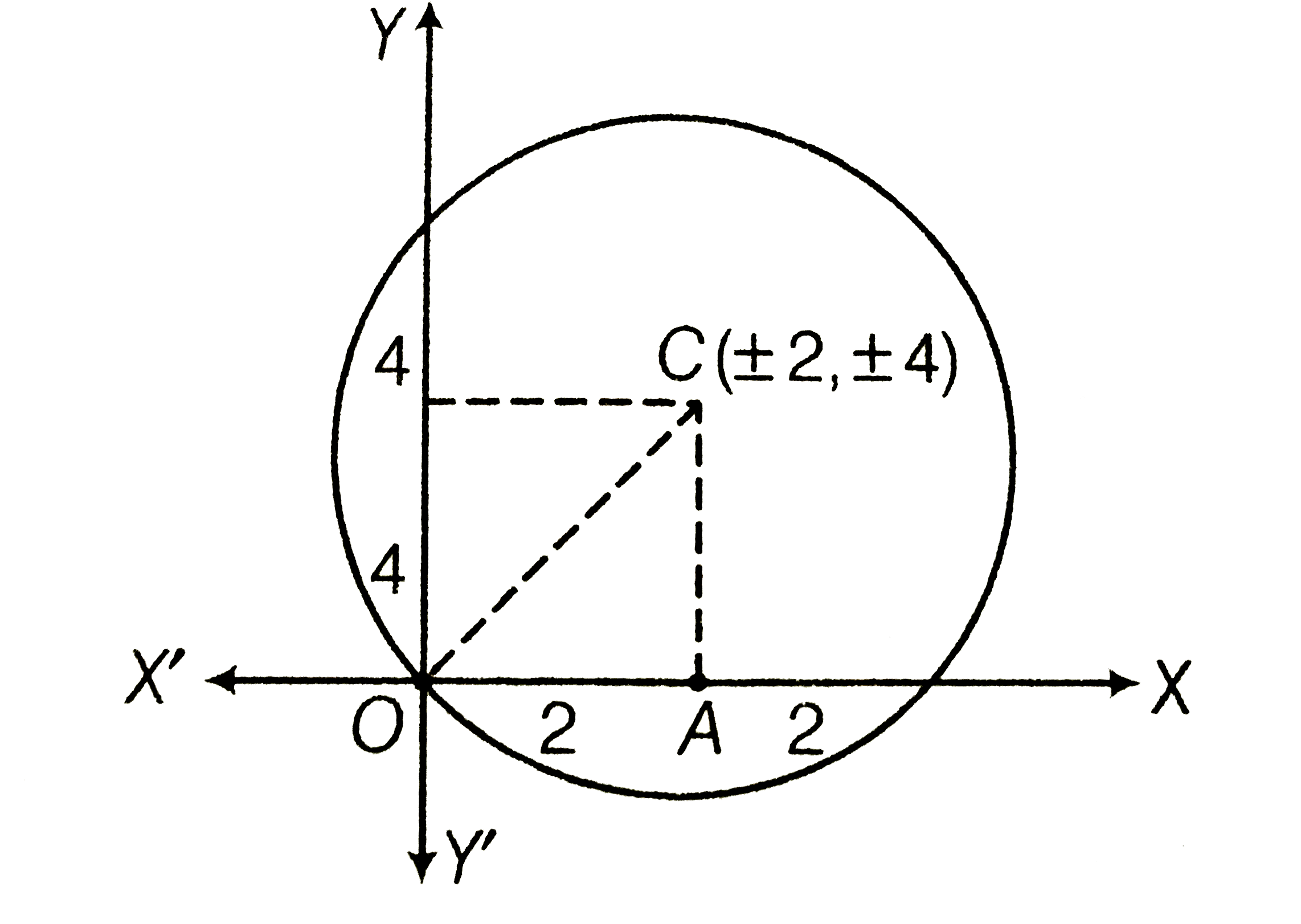The equations of the circle which pass through the origin and make intercepts of lengths 4 and 8 on the X and Y-axes respectively are
x2+y2+4x±8y=0
x2+y2+2x±4y=0
x2+y2+8x±16y=0
x2+y2y±x+y=0
The correct Answer is:A
In ΔOAC,oc2=22+42=20
required equation of circle is <br>(+-2)^(2)+(y+-)^(2)=20 rArr x^(2)+y^(2)+-4x+- 8y=0

Topper's Solved these Questions
Similar Questions
Find the equation of the circle, which passes through the origin and makes intercepts 4 and 2 on the x and y axes respectively.
View Solution(i) Find the equation of a circle passes through the origin and cuts the intercepts of 6 units and 8 units on X-axis and Y-axis respectively.
(ii) Find the equation of a circle which passes through the two points on y-aixs whose distance from origin is 4 units and radius is 5 units.
View Solution
Knowledge Check
The equation of the circle which passes through the origin and cuts off intercepts 3 and 4 from the positive of the axes, respectively is
A4x2+12xy+4y2−16y=0Bx2+y2−3x−4y=0C4x2−12xy+4y2+16y=0DNone of the aboveThe equation of the circle passing through (0, 0) and making intercepts 2 units and 3 units on the x-axis and y-axis repectively, is
Ax2+y2−6x−2y=0Bx2+y2−2x−3y=0Cx2+Y2−2x−6y+1=0Dx2+y2−6x−2y+2=0Equation of the circle through the origin and making intercepts of 3 and 4 on the positive sides of the axes is
Ax2+y2+3x+4y=0Bx2+y2−3x−4y=0Cx2+y2+3x−4y=0Dx2+y2−3x+4y=0
Equation of the circle passing through the origin and makes intercepts 4 and 6 on negative x-axis & negative y-axis respectively is
View SolutionFind the equation of the circle , which passes through the origin and cuts off intercepts a and b from the axes.
View SolutionFind the equation of a circle which passes through the origin and cuts off intercepts −2and3 from the x - axis and the y - axis respectively.
View SolutionThe centre of the circle passing through origin and making intercepts 8and−4 on x and y-axes respectively is
View SolutionFind the equation of the circle which passes through the origin and cuts off intercepts 6 and 8 from the positive parts of xandy axes respectively.
View Solution
